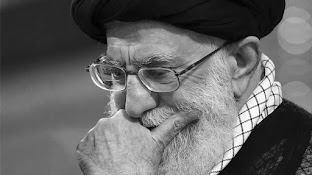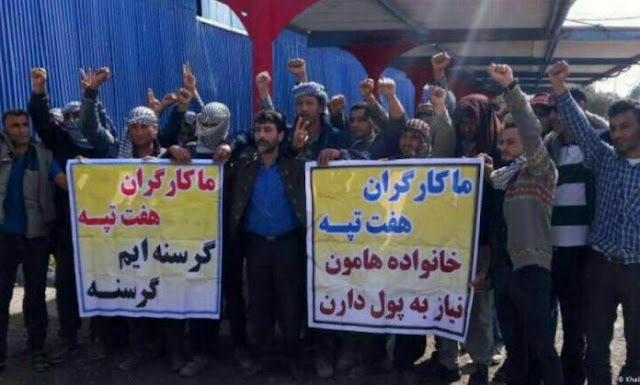Iran’s Regime Ramps up Coronavirus Warnings to Match Escalating Threat of Public Unrest
By Shahriar kia
Iran is facing a “third wave” of coronavirus infections, according to the regime’s Health Ministry. The mullahs’ Ministry of Health has acknowledged a series of record-breaking single-day death tolls since the middle of October, even when using the regime’s engineered statistics.
The daily increases have raised Iran’s official death total to nearly 36,000. The official figure will continue to display only a fraction of the truth. According to the People’s Mojahedin Organization of Iran (PMOI/MEK), which has been tracking the epidemic via its intelligence resources, the actual death toll is now over 142,000. This figure disrupts the notion of a “third wave” and instead suggests that the first wave of Iran’s infections never really ceased, because the regime never took meaningful action to address it.
The MEK’s account is based on the hospital and mortuary records, as well as eyewitness testimony and records from Iran’s National Emergency Organization which indicate that domestic outbreaks were underway more than a month before regime authorities officially acknowledged them. But when faced with criticism, the regime’s President Hassan Rouhani blatantly demanded credit for the admission, bogusly stating that the regime “did not delay one day” in revealing the public health threat.
In fact, the regime’s sham parliamentary elections apparently provided the regime with incentive to finally own up to its early failures to contain the disease. The regime’s sham parliamentary election met an unprecedented nationwide boycott, even though the regime’s authorities extended voting hours on the day of the election after urging everyone to participate as a religious and patriotic duty. But just days removed from the acknowledgement of a coronavirus outbreak, those same authorities were ultimately forced to blame the low turnout on health concerns, not political disaffection.
It was vitally important for the regime to promote this narrative, given that the election took place only about a month after student protests that condemned Tehran for attempting to cover up an incident in which a commercial airliner was struck by a missile belonging to the Islamic Revolutionary Guard Corps (IRGC). Perhaps even more significantly, that protest in turn took place less than two months after a nationwide anti-regime uprising during which the IRGC opened fire on crowds, killing over 1,500 peaceful, pro-democracy protesters.

The uprising itself was a sign of a growing public desire for regime change, as well as the increasing influence of the MEK, and its leading role during the uprising. Less than two years earlier, during another uprising in January 2018, mullahs’ Supreme Leader Ali Khamenei acknowledged that the MEK had played a major role in planning the demonstrations and popularizing slogans like “death to the dictator.”
The legacy of these uprisings certainly contributed to the low voter turnout last February, but the regime quickly seized upon the Covid-19 pandemic to muddy the waters on this issue. Afterwards, without undertaking any measures to seriously confront the crisis, the regime was also free to leverage it against the threat of further public demonstrations.
In the midst of the “third wave” it has become clear all over again that Tehran is keen to absolve itself of responsibility for slowing the spread, and to place it squarely on the people. The government has not acknowledged any of its own failings as reasons for the rising death tolls, but has proclaimed that ordinary citizens are not abiding by health experts’ recommendations. It has done this even in the absence of large-scale protests of the sort that defined the past two years. It is easy to imagine how the regime’s authorities would demonize such demonstrations in the presence of a worsening outbreak.
If the outbreak had already begun before the end of 2019, why wait until six weeks into 2020 before citing the outbreak as incentive for disaffected Iranians to stay home? It’s because January marked an all-important 40th anniversary celebration of the founding of the regime and authorities had gone to great lengths to organize public displays intended to counter the message of the mass protests.
State television cameras were trained on parades and gatherings that marked that anniversary, and the numbers of participants were reportedly padded by mandating attendance for government employees while providing free travel and other incentives to poor, rural families to travel into Tehran and other major cities.
Afterwards, acknowledging the coronavirus became not only an option but an imperative for the regime, as it promised to help stall the resumption of those protests. But of course, the regime couldn’t very well acknowledge the full extent of the outbreak, especially in the wake of its stage-managed anniversary gatherings. Doing so would have revealed that authorities not only failed to contain an emerging public health threat but actually amplified that threat with “super-spreader” events that encouraged nationwide travel.
The very existence of those events goes a long way toward explaining and further legitimizing the MEK’s death toll estimates. And as the Resistance continues to spread awareness of those estimates among a population that has already participated in multiple nationwide uprisings, the threat of further protest only continues to grow. This in turn explains why the regime has just now begun to acknowledge higher infection rates and death tolls. The worse the public health crisis appears, the easier it is for authorities to discourage political gatherings. In addition, the situation is worsened, is because of the regime’s inaction.
Furthermore, the worse the crisis appears, the easier it is for some of those authorities to justify across-the-board crackdowns under the guise of preventing the spread of infection. Accordingly, responsibility for Iran’s coronavirus response has long been vested not in the Health Ministry but in the IRGC – the very same force that killed 1,500 protesters at this time last year.
On October 31, Brigadier General Hossein Salami boasted to Iranian state media that “a door-to-door operation will go underway in search of the coronavirus carriers.” Naturally, the IRGC will be turning that operation into a series of instances of intimidation and unwarranted property searches. Indeed, this is exactly what should be expected, especially in light of the recent increase in reports of the IRGC attacking, humiliating, and even killing citizens on the streets of Iranian cities.
This phenomenon surely reflects growing concerns among regime authorities about the threat of renewed public unrest. And today, that threat comes not only from unresolved issues related to the past two years’ uprisings, but also from the regime’s mismanagement of the very same public health crisis it has been trying to exploit to keep people from re-raising those issues.

Shahriar kia
Political analyst writing about Iran and the Middle East. ... Member of Iranianopposition.
This article was first published by ncr-iran



Comments
Post a Comment